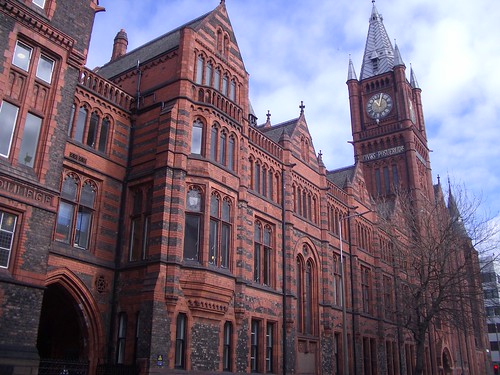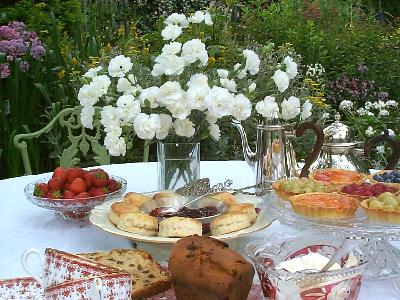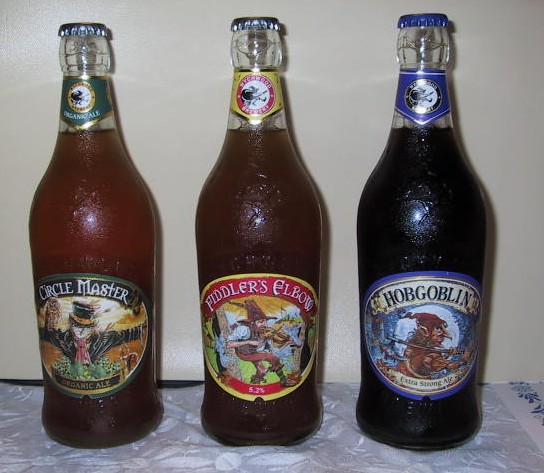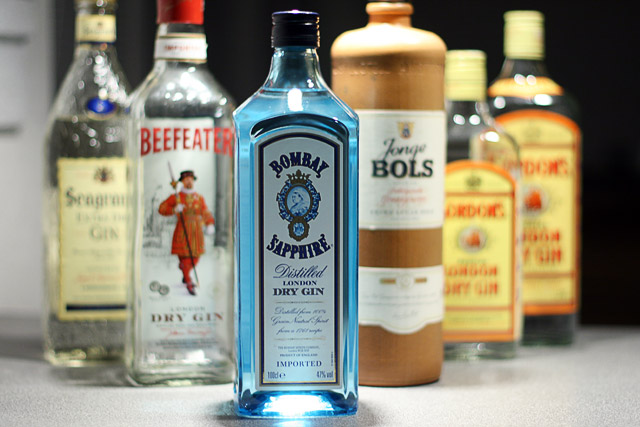 To be honest, the best thing I can remember is seminar trip. I had a fun playing golf, eating, watching a movie, talking at night, shopping, and so on. The movie we watched “The Full Monty” was way better than I expected. This trip was the only chance to get to know 3rd year students from this seminar. I was so happy to meet and talk to them. I still talk to some of them when I see them on campus. Anyway, I appreciate this course to give me a chance to think about the UK, and I learned a lot through this course. I am satisfied with what I have done as well as this course itself. I am thinking that I tried as much as I could. Finally I would thank to Simon for teaching us through nearly one year. Thank you!
To be honest, the best thing I can remember is seminar trip. I had a fun playing golf, eating, watching a movie, talking at night, shopping, and so on. The movie we watched “The Full Monty” was way better than I expected. This trip was the only chance to get to know 3rd year students from this seminar. I was so happy to meet and talk to them. I still talk to some of them when I see them on campus. Anyway, I appreciate this course to give me a chance to think about the UK, and I learned a lot through this course. I am satisfied with what I have done as well as this course itself. I am thinking that I tried as much as I could. Finally I would thank to Simon for teaching us through nearly one year. Thank you!2010年1月13日水曜日
Reflection on this Course
 To be honest, the best thing I can remember is seminar trip. I had a fun playing golf, eating, watching a movie, talking at night, shopping, and so on. The movie we watched “The Full Monty” was way better than I expected. This trip was the only chance to get to know 3rd year students from this seminar. I was so happy to meet and talk to them. I still talk to some of them when I see them on campus. Anyway, I appreciate this course to give me a chance to think about the UK, and I learned a lot through this course. I am satisfied with what I have done as well as this course itself. I am thinking that I tried as much as I could. Finally I would thank to Simon for teaching us through nearly one year. Thank you!
To be honest, the best thing I can remember is seminar trip. I had a fun playing golf, eating, watching a movie, talking at night, shopping, and so on. The movie we watched “The Full Monty” was way better than I expected. This trip was the only chance to get to know 3rd year students from this seminar. I was so happy to meet and talk to them. I still talk to some of them when I see them on campus. Anyway, I appreciate this course to give me a chance to think about the UK, and I learned a lot through this course. I am satisfied with what I have done as well as this course itself. I am thinking that I tried as much as I could. Finally I would thank to Simon for teaching us through nearly one year. Thank you!2009年12月13日日曜日
Minority languages in the UK
 English is the most dominant language in Great Britain Island, Island of Ireland, and Isle of Man, but Celtic languages, such as Welsh, Cornish, Scots, and Gaelic, used to be major languages in these islands in the past. In Ireland, which used to be controlled by Britain for a long time, 1,700,000 people used to speak Gaelic in 1850. As time passed, the number of Gaelic speakers declined. It dropped to 680,000 in 1891. However, Douglas Hyde established Gaelic League at the same time of a rise of action claimed for autonomy of Ireland. The purpose was to stop permeation of English language and protect the areas where Gaelic was spoken and help Gaelic language revive. Gaelic became a symbol of a nation. After Republic of Ireland was established in 1922, Gaelic became a required class. In spite of this, the number of Gaelic speakers declined to 120,000 in 1926, 70,000 in 1961, and 32,000 in 1980. However, because of the result of education, statistically, the number of people who has knowledge of Gaelic today is 41 percent.
English is the most dominant language in Great Britain Island, Island of Ireland, and Isle of Man, but Celtic languages, such as Welsh, Cornish, Scots, and Gaelic, used to be major languages in these islands in the past. In Ireland, which used to be controlled by Britain for a long time, 1,700,000 people used to speak Gaelic in 1850. As time passed, the number of Gaelic speakers declined. It dropped to 680,000 in 1891. However, Douglas Hyde established Gaelic League at the same time of a rise of action claimed for autonomy of Ireland. The purpose was to stop permeation of English language and protect the areas where Gaelic was spoken and help Gaelic language revive. Gaelic became a symbol of a nation. After Republic of Ireland was established in 1922, Gaelic became a required class. In spite of this, the number of Gaelic speakers declined to 120,000 in 1926, 70,000 in 1961, and 32,000 in 1980. However, because of the result of education, statistically, the number of people who has knowledge of Gaelic today is 41 percent.Welsh

Welsh is a national language of Wales (Red part of the map) as well as English. 80 percent of people who lived in Wales used to be able to speak Welsh at the early 19th century, but the number of Welsh speakers decreased as English became more common. It dropped to 54 percent in 1891, 40 percent in 1911, 30 percent in 1951, and 25 percent in 1971. At last it became 18 percent. In order to solve this problem, Welsh Language Society was established in 1962, and teaching Welsh at the beginning stage of elementary school and junior high school became compulsory. In a statistics of 1997, schools whose all classes or a part of class were done by Welsh accounted for approximately 20 percent. Schools which taught Welsh as a second language were over 75 percent. As the result, the number of Welsh speaker increased to 20.5 percent according to the research done in 2001.
 Many other things have been done in order to protect Welsh other than these things above. For example, using Welsh on signs as well as English, broadcasting in both languages English and Welsh, and using both languages on websites. Personally, I think that the best way is based on education because we have to have many young generations who can speak Welsh, otherwise no one will be able to speak and teach Welsh in the future. Then Welsh could be extinct. In this sense, I think educating students in Welsh and teaching Welsh as a second language is a good idea, and they do have to do so that Welsh can survive. A language is strongly intertwined with a culture. A language dies, which means a culture dies. As a student who are learning English, I think English ia a great tool to communicate with many people from all over the world; however, I also think we should protect minority languages as well in order to protect their cultures.
Many other things have been done in order to protect Welsh other than these things above. For example, using Welsh on signs as well as English, broadcasting in both languages English and Welsh, and using both languages on websites. Personally, I think that the best way is based on education because we have to have many young generations who can speak Welsh, otherwise no one will be able to speak and teach Welsh in the future. Then Welsh could be extinct. In this sense, I think educating students in Welsh and teaching Welsh as a second language is a good idea, and they do have to do so that Welsh can survive. A language is strongly intertwined with a culture. A language dies, which means a culture dies. As a student who are learning English, I think English ia a great tool to communicate with many people from all over the world; however, I also think we should protect minority languages as well in order to protect their cultures.Reference
Deguchi, Yasuo. Kobayashi, Akio. Saitou, Takako. The 21st Century Encyclopeadia of British Culture. Tokyo: Tokyo shoseki, 2009.
2009年11月25日水曜日
Wycombe Abbey
 Wycombe Abbey is one of the famous independent girls' schools in the UK, established in 1896. This school is located in High Wycombe, Buckinghamshire. About 540 students, ranged from 11 to 18, are studying there. This school is a bording school, which means most students are staying there to study. I will show you more about what boarding is in this entry.
Wycombe Abbey is one of the famous independent girls' schools in the UK, established in 1896. This school is located in High Wycombe, Buckinghamshire. About 540 students, ranged from 11 to 18, are studying there. This school is a bording school, which means most students are staying there to study. I will show you more about what boarding is in this entry.Aims and Ethos
The students' happiness and well-being are considered the most important.
The school's core values are trust, encouragement, and mutual respect.
Boarding School
The reason why this school is boarding school , according to web site, is "Always with friends", "Less time commuting to school and more doing something more interesting". There are a lot of merits being a boarding student. One girl states in school website, "Being a boarding environment allows Wycombe to become more than a school; it becomes a community." It seems to clearly show what boarding is like. Another student says, "You can go to see a teacher for help anytime." For them as students who study seriously, no wonder they have some hardtime to study and want to ask questions to teachers. I think this environment staying with students and teachers are good so that they can get more motivated and inspired to study. However, there are a few students called day boarder, but many of them choose to do full boarding later if there is bed vacancy.
Sport

Playing sports is one of the important aspect of Wycombe life. At the first few years, students are taught lacrosse, swimming, netball, gymnastics, dance, cross-country, athletics, and tennis. At Wycombe Abbey, a lot of sporting facilities are available. For example, The Sports Center, which opened in March 2004, has 25 m 6 lane swimming pool, sports hall, gymnasium, dance studio, fitness, 4 glass-squash court, and climbing wall. I was very surprised that they have a lot of sporting facilities, especially the fact they have a climbing wall seems to be very unusual to me. I suppose that they feel much stress if they only focus on study; therefore, I think having a lot of sporting facilities is good. Besides, I have heard that exercise makes study more effective. In this sense, Wycombe Abbey has a good balance study and sport.
2009年11月7日土曜日
Universities in the UK
Ancient Universities
Oxbridge and four universities in Scottoland (University of St Andrews, University of Glasgow, University of Aberdeen, and University of Edinburgh) have more than 500 years history. The buildings of these universities are mainly made up of limestone. The University of Oxford is the olderst university in the UK, which was established in 11th century. As of 2008, 47 nobel prise winners, 25 prime ministers, 6 kings, over 50 Olympic medalists graduated from Oxford.
Red Brick Universities
Relatively new universities which established mainly between late 19 th century and mid 20 th century are often called “Red Brick University”. The reason why they are called that is because buildings are made of red brick. The person who mentioned this word, red brick university, at first is Edgar Allison Peers, who was a professor teaching Spanish in University of Liverpool. He called these six universities;University of Manchester, University of Liverpool, University of Birmingham, University of Leeds, University of Sheffield, and University of Bristol as red brick universities.

Plate Glass Universities
Since 1960s, a lot of universities were founded in the UK based on "The Robbins Report", which called for expansion of universities. As the result, nearly twenty new universities were established. Since they are constructed by steel and plate glasses which are put in concrete frames, they started to be called plate glass university.
For example, University of East Anglia, University of York, and University of Essex are called plate glass university.

Reference
Deguchi, Yasuo. Kobayashi, Akio. Saitou, Takako. The 21st Century Encyclopeadia of British Culture. Tokyo: Tokyo shoseki, 2009.
2009年11月1日日曜日
Class System in the UK
 Although the class system has been getting less serious between 20th century and 21st century, it still exists in British society. Plus these days, people called "New Rich" who became wealthy through IT business came out. British class system is roughly divided into four groups, which are Upper Class, Upper Middle Class, Middle Class, and Working Class. According to the book, The 21st Century Encyclopedia of British Culture, only one percent of people belong to Upper Class. 10-20 percent of people belong to Upper Middle Class. 30-40 percent of people belong to Middle Class. The rest of people are Working Class. Of course there are many homeless in the UK, and we can categorize the class into more complicated, but there are four classes if we roughly classify as I stated.
Although the class system has been getting less serious between 20th century and 21st century, it still exists in British society. Plus these days, people called "New Rich" who became wealthy through IT business came out. British class system is roughly divided into four groups, which are Upper Class, Upper Middle Class, Middle Class, and Working Class. According to the book, The 21st Century Encyclopedia of British Culture, only one percent of people belong to Upper Class. 10-20 percent of people belong to Upper Middle Class. 30-40 percent of people belong to Middle Class. The rest of people are Working Class. Of course there are many homeless in the UK, and we can categorize the class into more complicated, but there are four classes if we roughly classify as I stated. - What kind of class is New Rich?
- What kind of jobs are classified into these four groups?
Aristocrats such as royal family
Upper Middle Class
Doctor
Laywer
CEO
Professor
Middle Class
Company employee
Public employee
Working Class
Those who are doing physical work, in other word the unskilled
- What difference does each class have?
 One characteristics between each class is accent. Generally speaking, we can recognize what class they belong to by their accent. The typical British English is called“RP (Received Pronunciation)" also known as “King’s English”, “Queen’s English”. It is said that people who can speak RP is below three percent of the population. Former prime minister of the UK, Tony Blair, is a good example who can speak RP. He might have been naturally practicing speaking RP through his career, which he went to public school, Oxford University, and became a lawyer. Meanwhile Margaret Thatcher is said that having taken lessons how to speak RP with a tutor after she became prime minister. Strictly speaking, RP and the pronunciation spoken by Upper Class are different. Originally RP is the pronunciation spoken by educated people in Upper Middle who went to public school and a prestigious university such as Oxford and Cambridge. Upper Class consists of only a few royal family and aristocrats, and their accent is just their own language, not RP.
One characteristics between each class is accent. Generally speaking, we can recognize what class they belong to by their accent. The typical British English is called“RP (Received Pronunciation)" also known as “King’s English”, “Queen’s English”. It is said that people who can speak RP is below three percent of the population. Former prime minister of the UK, Tony Blair, is a good example who can speak RP. He might have been naturally practicing speaking RP through his career, which he went to public school, Oxford University, and became a lawyer. Meanwhile Margaret Thatcher is said that having taken lessons how to speak RP with a tutor after she became prime minister. Strictly speaking, RP and the pronunciation spoken by Upper Class are different. Originally RP is the pronunciation spoken by educated people in Upper Middle who went to public school and a prestigious university such as Oxford and Cambridge. Upper Class consists of only a few royal family and aristocrats, and their accent is just their own language, not RP.- Movie recommended to learn British Class System
Reference
Deguchi, Yasuo. Kobayashi, Akio. Saitou, Takako. The 21st Century Encyclopeadia of British Culture. Tokyo: Tokyo shoseki, 2009.
2009年10月10日土曜日
Culture of British Meal
Development of English Breakfast
- In 18th century, when the industrial revolution developed, there were not so many people who were too busy in the morning. Especially for the men working in factories, it was necessary to get enough nutrition in the morning to manage harsh working.
- At the end of 18th century, tea, toast with butter, and porridge became very popular, and the custom eating three meals a day became common (They used to eat two meals a day).
- In 19th century, the breakfast developed more. Hot dish put with boiled egg, scrambled egg, and pork chop became common, which made people got easier to get energy in the morning.
- At the end of 19th century, current English style of breakfast was established, which is tea and toast for main, meat, fish, egg, and bunch of vegetables.

Afternoon Tea
The custom having afternoon tea was introduced by Anna Maria Stanhope in the middle of 19th century. At that time, because the time to eat dinner for the nobility was getting late gradually, they could not resisit hunger; therefore, noble ladies started to drink tea and eat snacks, which was the start of afternoon tea. Meanwhile at the end of 10th century, although afternoon tea began for the nobility to satisfy their hunger, it spreaded rapidly to commoners as well. They served tea with luxurious silverwares for the guests. Afternoon tea was not only for just drinking tea but also for showing their status and enjoying an elegance.

Reference
Deguchi, Yasuo. Kobayashi, Akio. Saitou, Takako. The 21st Century Encyclopeadia of British Culture. Tokyo: Tokyo shoseki, 2009.
2009年9月23日水曜日
Drinking in Britain
 What drink do you think is the most popular in Britain? Tea? Yes, but actually beer has longer history than tea and have been loved by many British people. It is said that beer and wine are the oldest alcohol and have already made in Mesopotamia civilization; however, they cannot make much wine in Britain due to climate condition; therefore, beer became very popular. After Middle Age, they even brewed beer in a monaster. People in Middle Age would often drink beer with bread to get nutrition out of beer. Cider, made by fermented apple, is also a famous alcohol beverage. Especially teenagers like to drink this because this taste is really sweet and easy to drink, but you have to be careful that this is still alcohol and not to drink too much.
What drink do you think is the most popular in Britain? Tea? Yes, but actually beer has longer history than tea and have been loved by many British people. It is said that beer and wine are the oldest alcohol and have already made in Mesopotamia civilization; however, they cannot make much wine in Britain due to climate condition; therefore, beer became very popular. After Middle Age, they even brewed beer in a monaster. People in Middle Age would often drink beer with bread to get nutrition out of beer. Cider, made by fermented apple, is also a famous alcohol beverage. Especially teenagers like to drink this because this taste is really sweet and easy to drink, but you have to be careful that this is still alcohol and not to drink too much.
Gin is not really common alcohol compared to beer, but there is an interesting fact in history over Gin. In 18th century Gin, which was poor in quality, was imported to Britain from Netherland, and it became popular and was drunk among many people. Especially those who lived in slums drank in order to prevent from coldness. As the results some people got issues, such as alcoholism, health problems, which caused a lot of troubles. Due to these incidents, the law in order to restrict Gin took effect in 1736 and 1751. This law made situation better; However, Gin abuse became serious again in 19 century. The big pub, called "Gin palace" was crowded with people who were crazy about Gin, and even kids went to the pub. Again, because of this serious situation, alcohol prohibition law was made and enforced. Queen Victoria also tackled this problem and soothed this situation.

Pub is derived from "Public House", which has been really popular among British peopele. Even small village has pubs. They talk and socialize themselves, drink, and eat so called pub menu like fish and chips. One of the funny thing about pub is its name. Probably the majorest name is "Red Lion". "King's Head" and "King's Arm" are also major ones. Some pub's names are very strange. For example, "The Bucket of Blood" and "Nobody Inn". Each name of pub has its own derivation. Pub is strongly connected with life of British people.
Reference
Deguchi, Yasuo. Kobayashi, Akio. Saitou, Takako. The 21st Century Encyclopeadia of British Culture. Tokyo: Tokyo shoseki, 2009.